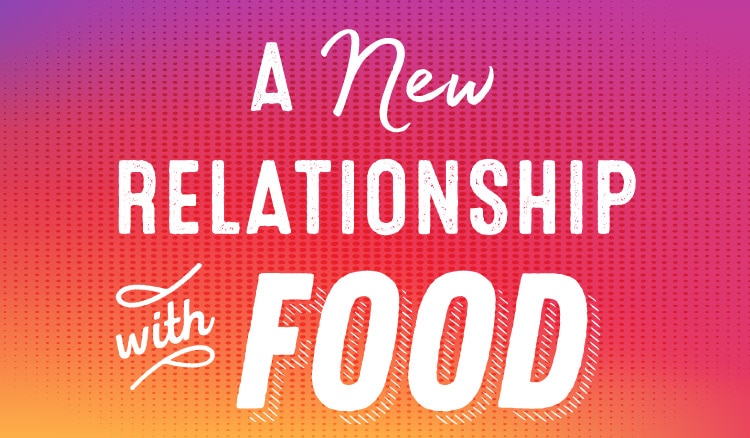Food is a hotter topic than ever right now. Consumers have evolved in terms of what they expect from their food, and brands are rapidly adapting to keep up with these demands. How we buy and prepare our food, and how we consume and think about food are changing. We are developing a new relationship with food—but what does this mean for food brands? Considering these changes, what is the next big thing that will revolutionize the food industry?
(A pdf version of this article can be downloaded here.)
The consumer mindset
The specialty food consumer today is hypervigilant, fully aware of what is in the food they choose to buy. They also want to ensure the brands they choose to support are fair and just, and will boycott brands for ethical or political reasons. Consumers’ willingness to pay a premium for convenience and quality hasn’t changed, but their willingness to pay a premium for trust is new.
This trusted relationship is coveted by brands because consumers become loyal followers who repeat-buy, try new products within the brand and share their passion for the brand with friends. For consumers, the benefit of the relationship goes beyond trust and becomes a big time-saver when shopping. If they are buying a different product within the brand for the first time, they know the product is already vetted by the brand’s values, and therefore they don’t feel the need to scrutinize the product as closely.
What you can do→ Make sure your ethics, values and politics align with your consumer base. Communicate these in your brand story, packaging and marketing.
Going beyond trust
Having clean ingredients in a product is no longer enough. With fake ingredients becoming more of an epidemic in the world’s food supply, consumers want to know where ingredients come from and how they are sourced. They want to feel good about the brands they support and ensure the brand’s values align with their own. If a brand is not being ethical in how they source their ingredients, that can be a deal-breaker for the consumer.
Many small brands are getting bought by large corporations and sometimes this can lead to the ingredients subtly changing to be of lower quality, or undesired ingredients sneaking in. Consumers are skeptical of big food brands, wondering if big brands are just in it for the money, and whether they really honor the values they speak of. Taking into account the vast amount of recalls and misleading labeling, consumers can be left wondering if any brand can really be trusted.
Ensuring your labels are fully compliant—in addition to being a legal necessity—shows that your brand holds accuracy and clarity of information in high regard, thus also cultivating trust.
What you can do→ Make sure your ingredient sources are clean and ethical. Go even further by spotlighting the sources you’re proud of, such as small farms you source from. Ensure your labeling complies with FDA food labeling guidelines both to protect your brand and to build trust.
How consumers perceive callouts, certifications & claims
As consumers become more skeptical of food brands and products, they scrutinize packaging even more today. We’ve known for awhile now that callouts such as organic, non-GMO and gluten-free are strong selling points. Likewise, we know that nutritional callouts promoting more of the good stuff and less of the bad stuff help motivate sales as well. We are therefore seeing an overabundance of callouts, certifications and claims on food packaging today, and that can affect the consumer in both a positive and a negative way.
The positive aspects are as noted above—these callouts help sell the products. Certain callouts automatically put products into the specialty food consumer’s ideal category and become a specific type of vetting, which builds on the trust aspect of the consumer-brand relationship.
Many packages contain a plethora of callouts however, and it’s not uncommon for brands to develop their own icons for selling points and claims. It is this overabundance of callouts and non-standard icons that can cause confusion and build skepticism with consumers. At first glance it might look impressive, and first impressions are essential in selling food products. However, when scrutinized closely, it’s possible a made-up icon could be based on fluff.
Adding to the confusion, there are new certifications coming out which need to be explained to consumers, which may increase the overwhelm of information.
On the one hand, having these certifications and callouts can automatically place your product within the artisan “in” crowd. But in this day of “free-from” overkill, we risk consumers becoming numb, and the information losing its effectiveness.
What you can do→ While callouts and certifications are important, make sure yours add value and are informative. If you have a lot of claims to make, consider featuring only the most important ones on the front panel and secondary selling points on a supporting panel. Keep the front panel clean, clear and concise.
How we view food is changing
Food is no longer just something we put into our bodies to satiate hunger. It is a source of valuable energy. We understand that what we put into our bodies affects the quality of our bodies and therefore the quality of our lives.
We once again are looking to food as a source of health, wellness and healing. Food as medicine is not a new concept but in this day and age where many are quick to pop pills, we are reconnecting with the root of our relationship with food. For hundreds of years our ancestors knew and relied on the healing properties of plants that grow around us, but we seem to have lost that. Over-processed food and artificial ingredients have become poison in our bodies. And now we look to food as the remedy. Real food.
This runs quite personal for me. For years, my hands were plagued with dyshidrotic eczema which is very dry skin with tiny, itchy bumps. Dermatologists prescribed steroid creams which which gave temporary relief but were not a long term solution. As soon as I stopped applying the creams, the eczema would return. I eventually turned to natural food remedies by researching which superfoods I could consume that might help. This led me to create my Green Super Food Spice Drink as a result of this. After regular consumption, the eczema quickly disappeared and has stayed away.
Let’s look at the power of food even beyond health. We are moving away from depriving our bodies of the foods we desire and instead we are embracing a more well-rounded perspective on the food we eat. For example, good fats are excellent in moderation. There are more options for sweet treats we can make or buy filled with goodness instead of bad fats, refined sugar and artificial ingredients. We have healthy indulgences readily available. We delight in savoring the glorious tastes of food, and the way a food’s flavors mingle and combine into something greater than its ingredients. We are truly enjoying food in a way that feels good and is good for us, and are viewing food as an essential part of health.
We still want the convenience of packaged food and easy meals for our on-the-go lifestyles. Many brands are filling this need, so that we no longer have to choose between convenience and health. These healthy convenience foods come at a premium price, which consumers are willing to pay, especially when they fully understand the value that comes with it.
What you can do→ Promote the healthy and convenient aspects of your products. Indicate how your product will make the consumer’s life easier. Consumers want to know what a product will do for them. When you speak to this lifestyle aspect and go beyond just selling points, it is a much stronger case for closing the sale.
How we interact with food is changing
Our interactions with food used to be as simple as going to the grocery store, bringing the food home, putting it away and preparing food for a meal using a cookbook. That still exists and is going strong. In addition to that, we now have many more options which are gaining a lot of traction. Consider the following:
- Buying food online is now a norm, and with many specialty food consumers seeking out specialty ingredients, it’s often much easier to find them online than search in a store. Amazon is certainly a leader in this area, and with its recent purchase of Whole Foods, is ramping up its commitment as a big player in the specialty food arena.
- There are numerous meal-prep kits and prepared meal subscription options that have gained a lot of traction with consumers.
- Healthy convenience food is on the rise and more in-demand than ever.
- Grocery delivery services have been around for a long time, but now they will even come into your home and put them away for you.
- Many consumers are making small trips to the store to get only what’s needed for the next few meals instead of a mass shopping trip every once in awhile.
- There is a wealth of food blogs, many suited to individual diet trends (e.g., gluten-free, vegan, etc.). Cooking has never looked so delicious, temping or easy.
- Big-box and club stores are huge players in specialty food, with large dedicated sections and many high-quality products for much cheaper than can be found elsewhere.
How we interact with food is changing, and therefore how we relate to food is changing.
On the one hand, food is becoming more interwoven into our lives than ever before. I’m a big fan of these technologies and innovations that make it easy to explore, find and try new recipes and unusual ingredients. Healthy and specialty food is more accessible and convenient than ever. The purchasing experience is becoming easier and more streamlined.
At the same time, there is also more distance being created between the food and the consumer. When we buy food online or food that’s already prepared, we are distancing ourselves from the tangible qualities of the food purchasing and preparation process. This distancing can be especially troubling for food brands as they strive to be seen and heard among the competition. It is therefore crucial that brands fully live and breathe their story and values, and continually surprise and delight consumers. This will strengthen a brand’s emotional connection with its audience, and keep consumers interested and engaged.
When your audience is fully engaged with your brand, the trust aspect of the relationship is kept fresh and strong. Trust not only needs to be cultivated, but also maintained and repeatedly strengthened in order to avoid faltering. It is this trust and emotional connection that counters the distance being created with our food—keeping us connected, rooted and grounded.
When brands spotlight things like ingredients and sources they’re proud of, or small farms or communities they support—it brings us closer to our food. When we are reminded of all the effort, care and hard work that go into producing a quality food product, it stokes the fire of our elemental relationship with food.
What you can do→ Keep evaluating and evolving your mission, values and brand story as your brand grows. Look for opportunities and new ways to weave these aspects into your branding, packaging and marketing. Spotlight what makes your process unique, the people behind the brand and other sources your product supports.
The human connection
When a consumer receives trust and value from a brand, it leads to real, authentic connection. When they feel distrust, there is disconnection. The food industry in general has created a great deal of distrust in the recent past, it’s time to turn toward real connection, meaningful stories, and to give back to the consumer the trust that has been missing—that they have been craving—for so long.
If you’re interested in going even further on the connection between food brands and consumers, keep an eye out for our upcoming book later this year: How to Design Your Specialty Food Packaging to Sell — a step-by-step essential guide for specialty food brands. Learn more and sign up for updates at specialtyfooddesign.com.
What does meaningful connection between brands and consumers mean to you? I’d love to hear your thoughts on this, or any of this article, in the comments below.





